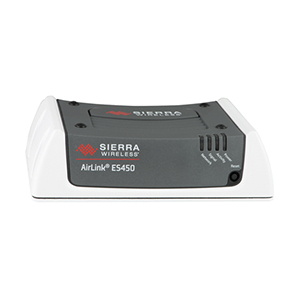Technology in the squad car is advancing every day which means staying on top of the best IT advances can be a huge challenge for any department. Video surveillance, license plate recognition (ALPR), electronic ticketing systems and the latest vehicle dispatching and tracking technologies enable officers to safely cover more area, and coordinate with other officers and agencies. Today’s police officers, paramedics, firefighters, utility workers, transit operators, and other public safety workers rely on advanced mobile applications, such as automatic vehicle location, traffic signal prioritization, computer aided dispatch, route and schedule management, and fare payment systems that increase productivity and improve safety.
The main point of access for these applications is often from the vehicle, because it’s equipped with onboard wireless connectivity and transmits and receives data on a nearly continual basis. In-vehicle connectivity has become customary, with first responders and field service personnel driving cars, vans, and trucks equipped with a network connection that provides convenient access to voice, text, and video data. However, if the vehicle has only one onboard connection, the setup involves a certain amount of risk. Any issues with network coverage, bandwidth, or usage can mean delayed communications or, worse yet, no communications at all. Losing the onboard connection can have extreme consequences, and can even mean the difference between life and death. How do you reduce this risk? By adding at least one more onboard network connection you can greatly reduce this risk. An alternative connection – to a secondary cellular network or some other format, such as Wi-Fi or satellite – creates a layer of insurance. When the primary connection isn’t up to the task, the alternate connection can be brought online to keep communications intact. Having two or more available connections onboard the vehicle, or “multi-networking”, protects against worst-case scenarios, and increases resilience for emergency response and other in-field services.
So, what is involved in a multi-network concept? A multi-network concept refers to any setup that provides the vehicle with more than one network connection, meaning, there can be a mix of technologies onboard ranging from cellular and Wi-Fi to LMR, satellite, or new formats as they come online, such as the FirstNet network for public safety. A multi-network router installed in the vehicle is used to manage the switches from network to network. So, when are these typical network changeovers? Changeovers usually happen at three points of operation: When leaving the depot and transitioning from Wi-Fi to cellular, when returning to the depot and transitioning back from cellular to Wi-Fi, and while the vehicle is in motion, with the router switching from one network to another to optimize in-field connectivity.
With the right multi-network solution in place, changeovers from one network to another can happen automatically without any kind of manual intervention, and the necessary security protocols are maintained without interrupting the flow of work, even when there’s a VPN (Virtual Private Network) involved. Furthermore, the selection criteria for each network connection can be customized, based on things such as vehicle location, vehicle speed, or the type of data being transmitted. The overall result is more efficient network usage, more effective field services and lower operating costs. Law enforcement and other organizations are now using more video, and at a higher resolution. The video is typically stored in the vehicle and then transmitted to the backend system at periodic intervals. The mobile router can be configured to use a dedicated link to send video, so the data-intensive video transmissions don’t disrupt or slow down the other services in use. Alternatively, the router can be configured to send video transmissions when the vehicle returns to its home base, using the depot’s faster, more secure Wi-Fi connection to transfer video. Now, how to choose the right mobile router for your workforce to ensure connectivity in the field.
The operating costs and in-field effectiveness of a multi-network platform are heavily influenced by the ability of the router to manage seamless network changeovers and protect data. The router’s switching speed, security features, and programmability all affect how well the solution performs, and how much it costs to manage. It’s important to consider all these factors when evaluating the various options available for mobile multi-networking.
Transitioning to a multi-network environment is a serious undertaking. To maximize your return on investment and fully realize the benefit to your organization we recommend three things to look for in a multi-network mobile router:
- Switching speeds that are fast enough to support seamless connectivity.
- The ability to provide continuous security without impacting performance.
- A policy engine that can be configured for intelligent switching and customized operation.
Choosing a mobile router that meets all three criteria lets you create a multi-networking environment that not only enhances efficiency but also adds value. Group Mobile works closely with Sierra Wireless to offer the world a comprehensive offering of hardware, software, and services for connected devices and machine-to-machine communications. Together, Group Mobile and Sierra Wireless provide innovative, reliable and high performing solutions.
Group Mobile’s team of industry experts can assist you in selecting, designing and implementing a multi-network environment for mission-critical fleets, request a free personalized quote.





